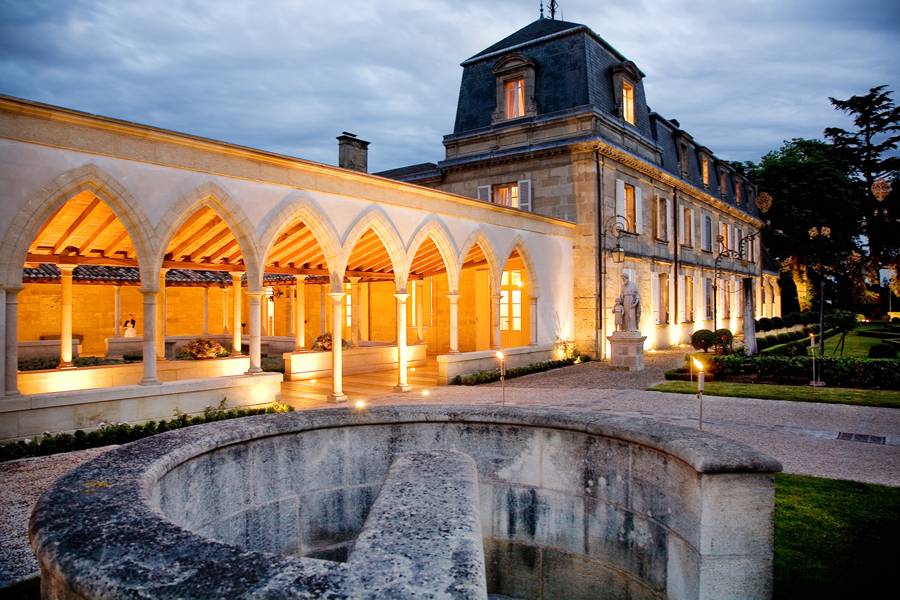- Colour Red
- Producer Château La Mission Haut-Brion
- Region Pessac-Léognan
- Drinking 2024 - 2035
- Case size 6x75cl
- Available Now
2020 - La Chapelle de La Mission Pessac-Léognan - 6x75cl
- Colour Red
- Producer Château La Mission Haut-Brion
- Region Pessac-Léognan
- Drinking 2024 - 2035
- Case size 6x75cl
- Available Now
Select pricing type
Need help? Call +44 (0)20 7793 7900 or email wine@goedhuiswaddesdon.com.
-
Neal Martin, May 2021, Score: 88-90
The 2020 La Chapelle de la Mission Haut-Brion has a perfumed, floral bouquet of iris and pitted black olive scents infusing copious black fruit. The palate is medium-bodied with a little more backbone than the Le Clarence Haut-Brion, plus it is a little drier on the finish. It just needs to develop a bit more flesh and sensuality by the time it is bottled. Drink 2024 - 2034
-
Antonio Galloni, June 2021, Score: 91-93
The 2020 La Chapelle de La Mission Haut-Brion is rich, dense and so inviting, right from the very first taste. Ripe red purplish/berry fruit, rose petal, spice and gravel all meld together in the glass, but what impresses most about La Chappelle is its exceptional balance. Aromatics, fruit and structure are all so well-balanced. The 2020 is an especially fine La Chappelle. Drink 2025 - 2035
-
Decanter, May 2021, Score: 94
You are immediately set at ease by the confidence and sheer easy appeal of this wine. A silky and seductive La Chapelle that rivals plenty of first wines in this vintage. The texture is rich and taut at first, then softens in the glass, with a charge of freshness that keeps the momentum and the energy high. Not many wines that rival the 2010 and 2016s, but here it very much does - exuberant with chocolate and cracked pepper but pulls back at the right moment. Harvests from 7th to 29th September. I love it. Drink 2026-2040
-
Matthew Jukes, April 2021, Score: 17.5
The nose is far more open and floral than I expected and while I am aware one cannot smell texture, there is a kindly, open, silky nature to the perfume. The palate follows up this cordial theme with a generous, open and expressive flavour and it already seems well integrated and balanced. The tannins are feisty, as always, but they are more than compensated but the open and gregarious fruit notes on the mid-palate. There is discreet tension here and this brings a refreshing nature to the finish, but there is nothing dry or closed about the experience and this makes it one of the most forward La Chapelles in recent years.
-
Jancis Robinson, April 2021, Score: 16.5
Dark purplish crimson. Subtle, saline nose. Really gets the saliva flowing. The tannins are not the supplest – slightly sandy-textured – but the fruit is very dense and correct with real life to it. Medium weight with great balance. Racy wine with good drive – though you'll have to wait awhile for the tannins to recede. Drink 2027 – 2041
-
Jeb Dunnuck, May 2021, Score: 92-94
Black cherries, currants, tobacco, and leafy herb notes all emerge from the 2020 La Chapelle De La Mission Haut-Brion. and it's medium to full-bodied, with a round, layered mouthfeel, ripe tannins, and just a big, rich, yet concentrated vibe that's very much in the style of the vintage. It's going to have two decades of longevity.
-
Wine Cellar Insider, May 2021, Score: 92-94
Tobacco leaf and currants, savory herbs, cedar, and red plums open the perfume. On the palate the wine is loaded with sweet, red fruits, soft, polished tannins, freshness and a tobacco infused, refined, spicy currant character. Give this at least 5 years before popping a cork. Enjoy it while waiting for the Grand Vin to develop.
Producer
Château La Mission Haut-Brion
Owned by the Dillon family since 1983, La Mission Haut Brion is without doubt one of the mostexceptional wines of Bordeaux. Across the road from Haut Brion, it regularly competes with its moreillustrious older sibling and has even outperformed Haut Brion in certain vintages, such as 2006 when Wine Spectator suggests that it "could be the wine of the vintage".
Region
Pessac-Léognan
Stretching from the rather unglamorous southern suburbs of Bordeaux, for 50 km along the left bank of the river Garonne, lies Graves. Named for its gravelly soil, a relic of Ice Age glaciers, this is the birthplace of claret, despatched from the Middle Ages onwards from the nearby quayside to England in vast quantities. It can feel as though Bordeaux is just about red wines, but some sensational white wines are produced in this area from a blend of sauvignon blanc, Semillon and, occasionally, muscadelle grapes, often fermented and aged in barrel. In particular, Domaine de Chevalier is renowned for its superbly complex whites, which continue to develop in bottle over decades. A premium appellation, Pessac-Leognan, was created in 1987 for the most prestigious terroirs within Graves. These are soils with exceptional drainage, made up of gravel terraces built up in layers over many millennia, and consequently thrive in mediocre vintages but are less likely to perform well in hotter years. These wines were appraised and graded in their own classification system in 1953 and updated in 1959, but, like the 1855 classification system, this should be regarded with caution and the wines must absolutely be assessed on their own current merits.




